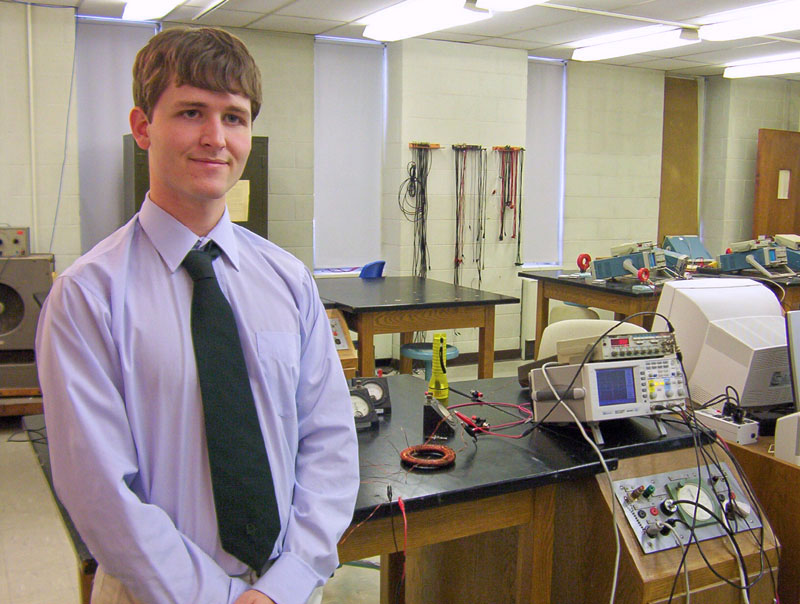

Michael Faraday's
Discovery of Induction
Eric Seyse '06
 |
 |
| Eric and his gear | Hand made iron ring |
Abstract:
I have recreated and repeated Michael Faraday's August 29th 1831 experiment in which he discovered what we now call mutual induction. I made close approximations of his apparatus, experiencing the difficulties associated with traditional equipment. I was able to induce enough current in the secondary wire to disturb a compass needle with the induced magnetic field surrounding my secondary wire. Thus I observed results which are concurrent with Faraday's. The low magnitude of induced current compared to input current indicates that Faraday observed a very small effect, which explains why the scientific community spent about a decade of searching before Faraday found it.
To satisfy curiosity I attempted to explain Faraday's experiment in modern terms by relating induced voltage to the voltage across the primary coil. I applied 0.2 Amps to the primary coil of 330 loops; 0.2 mA was induced in the 130 loop secondary coil. This low value has to do with the resistance of my circuit.
For more information, contact Dr. Karen Johnson:
Return To 2006 Senior Projects
|
|
||
| © | St. Lawrence University | Department of Physics |
| Revised: 24 Jan 2006 | Canton, NY 13617 |